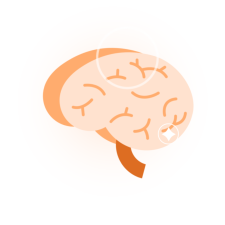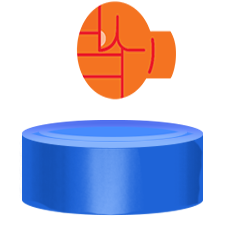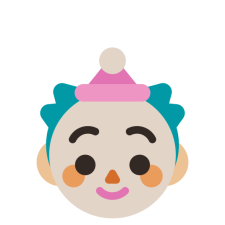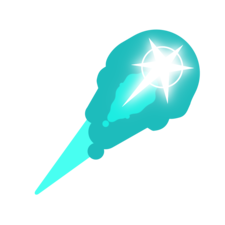
Hi! I'm DrummerJacob, the Rust music guy, and I just wanted to thank you for stopping by! In this guide, I will teach you everything you need to know to make sounds in Rust. There are 4 main ways to do this, and I will explain everything here.
Ive been putting together a pack of 10,250+ MIDI songs since the day Rust released the music DLC. Ive easily spent more than 1,000 hours editing these songs to make them sound good on Rust instruments since many of the free ones are sounding bad or are hard to find. The pack includes folders for each/all instrument types, and within those, 18 styles of music to choose from like (rock, hip-hop, reggae, soundtracks, classical, etc.)
Visit my Rust MIDI music resource page:
https://www.rustmidi.com
Most of the 10,250+ songs have been edited so they sound better using Rust instruments. Some of these MIDIs are custom made songs when my favorite songs werent available for download, I created MIDIs for them. Some of them just dont sound good because of how the song was written and MIDI limitations, but Ive kept them anyway for people who really want them.
The folders are divided by instrument, but the Piano folder has the majority of the songs, and most of the piano songs can be used for any instrument other than drums/percussion so the songs you find in each other folder are songs specifically good for that instrument, but the piano folder has most of the music.
Join my Music Discord for any questions/suggestions/etc: https://discord.gg/RuvsKFYEKF

1

1

1

2

2

1

1
В избранное В избранном Поделиться Этот предмет добавлен в избранное.
| 8,445 | уникальных посетителей |
| 24 | добавили в избранное |





Here, I will teach you everything you need to know to use the four methods to play music in Rust:
1.) MIDI player software: (MIDI Player/Loop MIDI or Rustissimo)
MIDI Player + Loop MIDI:
To play music using a 3rd party program (completely legal and widely used), the suggested software is a combination of both MIDI Player and Loop MIDI. MIDI Player acts like a typical media player, and Loop MIDI takes the MIDI signal from MIDI Player and ports it into Rust.
Get more information at the Rust MIDI website:
Rust MIDI website [www.rustmidi.com]
You can find information on the Download page explaining how to get MIDI Player/Loop MIDI as well as an option to download the free 10,250+ song MIDI pack.
Step 1 - Open Loop MIDI first and all you ever have to do here is create one track at the bottom right. Type 'Rust' in the bottom right, and then click the + bottom on the bottom left to add a new port. It doesn't matter what you name it, as long as you can recall it later. Using the default name is fine.
Thats it for Loop MIDI. Keep it open while you play music.
Warning (bug): Sometimes when you open Loop MIDI + MIDI Player and the settings are correct, it still wont make sounds. To wake it up, click the + button again, make new track (extra from the one you created) and then delete it again. It happens about 1 out of 5 times I use these two programs.
Step 2 - Open MIDI Player and go into Settings at the top left 'Cog Wheel' and change only the top section called MIDI Out:
Make sure both 'Use Midi Mapper' is unchecked & Use Bass (Soundfonts/VSTi) are both unchecked.
Change the Output Port to whatever you named your port to in Loop MIDI. I mentioned I name mine Rust.
Now, click and drag a MIDI (.mid) file from your music folder and double click the file in your MIDI Player playlist to begin playing the song. Make sure you are sitting at your instrument or holding your instrument in Rust and it should begin moving and playing the notes of the song.
Reminder: You never need to change any settings in MIDI Player other than making sure the top 2 boxes are unchecked and selecting the port you created in the top most pull down bar. And you must open Loop MIDI first so that when you open MIDI Player next, it can read your open port, otherwise youll have to close the player and open Loop MIDI first.
The recommended program for playing MIDI files with more than one person together is a program on Steam called Rustissimo which also works similar to MIDI Player except it can connect multiple players together to play different instrument parts of the same song.
Download the free version or pay for the $5 full version of Rustissimo. The setup is simple. Open Rustissimo, go to the Settings Cog wheel on the top right and select Rust or whatever you named your port in Loop MIDI.
You can create your own concert if you have the MIDI files, or you can join a friends concert who has already set one up, or you can setup Quick Concerts which is like your regular music playlist that will start/stop song.
The music pack I have available at my website shown earlier has songs specifically edited for each instrument and work perfect for this program since it gives each person one instruments part to play. Check the folder called "Full Band" for full band orchestrations that work for Rustissimo.
2.) Using Rust F1 Console:
Using the console is simple and easy, and is a built-in system to play music in Rust.
First, you'll want to locate your Rust 'instruments' folder to store your MIDI Files. Navigate to your Rust folder. The easiest way I would recommend is to Right Click your Rust game in your Steam Library, click Properties, and then go to Open Source Folder or whatever it's called, and it will take you to your Rust folder.
Within that, there is a folder called 'instruments' in the root of Rust folder. If not, create it.
This is where you must keep the MIDI files you wish to play using the console. It's also recommended to rename your MIDIs to one simple word instead of having spaces because using spaces in console requires " " and that can complicate things when you want to just quickly type in a song. So usually people rename their songs like (Bohemian Rhapsody) 'bohrap' or (Save Your Tears) 'savetears'
(no '/' required or allowed for console commands)
The commands for playing/stopping a song is:
instruments.playrecording [filename]
instruments.stoprecording [filename]
The keybind for it is:
bind n instruments.playrecording [filename]
Note: Do not write '.mid' or '.midi' after the song in the console. It already expects MIDI format.
3.). Using your computer's keyboard or mouse:
1.) This is the most basic and simple method for making sounds. You can Left Click your mouse to play the default (middle A=440hz) note or Right Click and hold your mouse to play a default ditty.
You can get creative with holding Right Click for a few seconds and then tapping Left Click a few times in different amounts to make some funny sounding remixes.
2.) Pressing R will put a green box around your screen, showing you that you are in Play mode.
Play mode means anytime you press a letter or number on your keyboard, it will send a MIDI signal as if you played a note on a piano. The notes arent perfectly setup and I honestly dont even know the logic behind their default settings, but this is not a perfect way to play because notes are missing.
On the piano, there are only 12 individual notes, and then as you go higher, they get repeated at higher octaves. The notes are A, A# (# = sharp - which means a half step above), B, C, C#, D, D#, E, F, F#, G, G# and then youre back to A, but at double the frequency.
In Rust, I think there are only 8 notes in the scale, so 4 of the notes are missing, which means you cant play all the notes of many song melodies. You can re-program them in your settings however, and make it work, but I havent done this since I have a real piano and dont really need to use this method, but you can test this out and set each one up in a logical way.
My recommendation would be something like:
SD GHJ
ZXCVBNM
Where Z=A, S=A#, X=B, D=B#, C=C (nice), V=D, G=D#, B=E, H=F, N=F#, J=G, M=G#
So to make this more clear, if you look at an image of a piano - the white keys are the ZXCVBNM and the black keys are SD GHJ. (Its a bit complicated, but I hope that helps a little.)
4.) MIDI instruments: (real instruments)
To play music using real instruments, simply plug in your MIDI instrument into your computer via USB. I use an M-Audio Keystation 88 and a Simmons 350 Electronic Drums connected by USB.
In the Rust Menu, go to Options>Controls and make sure your "MIDI INPUT" is turned to On. If you want to use a Sustain Pedal which I highly recommend for Piano if you have one, goto Options>Experimental and select SUSTAIN PEDAL SUPPORT
Drum key configurationThe first step is setting up the controls for your drums. Rust by default doesn't have the Left and Right hands setup for proper animations (it uses your right hand for everything and your left hand sits idle) so we need to change the controls to fix that. You have the ability to program two keys for each instrument to be able to play fast parts, just as if you were using 2 hands to play the drums.
In my setup, I have the snare drum programmed twice for L and R hands, the bass drum setup for L and R feet (only right foot animation) and the hi-hat setup for L and R hands, while the rest of the instruments are all setup with one key per instrument for the R hand like cymbals and 3 toms. Its the best/most realistic setup you can do with a 10 key Numberpad.
Here is a list of what controls you should set to your drum set. You'll find these in Options>Controls and scroll down towards the bottom section called Instruments.
This setup is ergonomically laid out so that its easy for two hands to use and your fingers wont trip over each other so much while playing sick drum beats.
A Note - Floor tom [1]
A#Note - Closed hi-hat R hand [+]
G Note - 2nd tom [4]
G#Note - Snare drum right hand [.]
C Note - Bass drum 1 [2]
C#Note - Bass drum 2 [3]
D note - Snare drum left hand [5]
D#Note - Snare weird patter sound [0]
E Note - Closed hi-hat L hand [6]
E#Note - Loose hi-hat [8]
F Note - Small tom [9]
F#Note - Cowbell [enter]
B Note - Ride cymbal [7]
B#Note - Crash cymbal [9]
If your drum sounds don't play, make sure to try pressing the [num lk] key (Number lock on the right side of your keyboard on the keypad) which you will accidentally bump occasionally while playing.